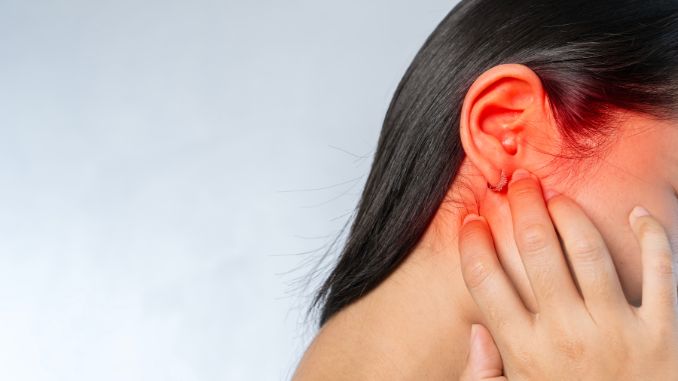Ear pain can throw off your whole day. Whether it comes on suddenly or builds slowly, the only thing on your mind is how to stop an earache fast. Good news—you’ve landed in the right place.
We’re Auracle, and ears are our thing. We design and build innovative ear care products like the Eddy, our flagship ear wax removal device. And today, we’re diving deep into real, effective ways to relieve pain, treat infections, and help you get back to feeling like yourself—fast.
What Causes an Earache?
Knowing what’s behind the ache helps you deal with it faster. Here’s a quick look at the usual suspects:
-
Earwax build-up in the ear canal can lead to pressure and pain.
-
A middle ear infection (also called otitis media) often follows colds or sinus issues.
-
An outer ear infection—commonly known as swimmer’s ear or otitis externa—can be caused by excess water trapped after swimming.
-
Inner ear infections are less common but may cause dizziness or a spinning sensation.
-
Changes in altitude or pressure (like during a flight) can cause pain in the middle ear.
-
Other sicknesses like the flu can cause inflammation in the ears, particularly in children.
How to Stop an Earache Fast At Home
You’ve got options—and some of the best ones are already in your home.
1. Warm Compress or Heating Pad
This old-school trick works because warmth improves blood flow, encourages fluid draining, and soothes the affected ear.
-
Use a heating pad or warm, damp cloth.
-
Apply it to the infected ear for 15-20 minutes.
Bonus: Try alternating with cold compresses if your ear feels swollen.
2. Over-the-Counter (OTC) Pain Relief
OTC pain relievers like ibuprofen or acetaminophen (Tylenol) can work wonders.
-
Reduce inflammation.
-
Help relieve pain.
Just be sure to follow the proper dosage, especially for a young child.
3. Ear Drops
Ear drops can help soften wax or treat mild outer ear issues. Look for fluid drying eardrops to remove excess water, especially after swimming.
A few drops of hydrogen peroxide can soften wax, but using too much hydrogen peroxide can irritate the skin in your ear canal.
Need a better clean? Our Eddy uses warm water and a rotating nozzle to flush wax safely without pushing it deeper—unlike cotton buds, which can push infected fluid farther into the ear.
4. Stay Hydrated + Use Steam
If your ear pain is due to fluid buildup or sinus pressure, hydration and steam can help thin mucus and encourage drainage.
-
Drink water.
-
Lean over a bowl of hot water and breathe in deeply.
-
Add eucalyptus oil for an extra kick.
5. Use the Valsalva Manoeuvre (For Pressure Pain)
Feeling blocked? Try this:
-
Pinch your nose.
-
Close your mouth.
-
Gently blow to equalise pressure.
This helps open the Eustachian tubes in the middle ear.
6. Adjust Your Sleep Position
Lying flat can make things worse. Try using a few extra pillows to elevate your head—this helps with fluid draining and relieves pressure.
Sleeping on your side with the affected ear facing up is often more comfortable.
Ear Infections: What You Need to Know
There are several types of ear infection, and knowing which one you’ve got makes a huge difference.
|
Type |
Where It Occurs |
Common in Children? |
Key Symptoms |
|
Otitis Media |
Middle ear |
Yes |
Pain, fluid coming from ear, fever |
|
Otitis Externa |
Outer ear |
Swimmers |
Itchiness, pain when touching ear |
|
Inner Ear Infection |
Inner ear |
No |
Dizziness, nausea, balance problems |
Most ear infections will resolve on their own, especially in kids. But if symptoms linger more than a couple of days, it’s time to check with your doctor.
Common symptoms of an ear infection:
-
Ear pain
-
Fluid or pus from the ear
-
Trouble hearing
-
Spinning sensation or imbalance
-
Feeling pressure inside the ear
-
Feeling tired or like you feel sick
Treating an Ear Infection at Home
For minor cases or early symptoms, home remedies can make a real difference:
-
Warm compress to relieve pain
-
Over the counter pain reliever like ibuprofen
-
Fluid drying eardrops to remove moisture
-
Hydrogen peroxide drops (just a few drops, and not too often)
-
Rest and hydration to help your immune system fight infection
If you suspect a bacterial infection or if symptoms worsen, a doctor may prescribe antibiotics.
What About Repeated Infections?
Frequent ear infections may point to underlying issues:
-
Ongoing fluid buildup in the middle ear
-
Allergies
-
Exposure to cigarette smoke
-
Enlarged adenoids in kids
In these cases, your doctor might explore more long-term treatment options, including small tubes placed in the ears to improve drainage.
When You Need Medical Help
Some situations call for more than home remedies. Watch out for these red flags:
-
Symptoms remain for more than 2-3 days
-
Hearing loss
-
High fever
-
Drainage of infected fluid
-
Suspected ruptured eardrum
If you're unsure, check with your doctor. You may need professional ear infection treatments.
The Auracle Difference
Not all ear pain comes from infections. Often, it's just wax that's overstayed its welcome. That’s where we come in.
The Eddy is our signature ear wax removal device, designed with input from audiologists for safe at-home use.
What makes it great:
-
Adjustable water pressure to avoid discomfort
-
360° rotating nozzle for full reach in the ear canal
-
200ml water tank to flush out wax and debris
-
Safe, rechargeable, and easy to use
Pair it with our saline sachets for extra soothing power, and grab replacement tips to keep things clean.
Want to understand when to clean your ears? This blog on wax removal frequency has all the details.
Conclusion: Don’t Let Ear Pain Steal Another Day
Whether it's wax, infection, or pressure pain, now you’ve got what you need to deal with it—fast. With the right combo of warm compresses, OTC pain relievers, ear drops, and good sleep posture, you can help your body fight back.
For long-term prevention? Ditch the cotton buds and use a proper tool like the Eddy to keep your ears healthy, clear, and pain-free.
Because earaches shouldn’t slow you down.
FAQs
How to flush out an ear infection?
Flushing the ear should only be done if your eardrum is intact. For outer ear infections, gentle cleaning with warm water may help, but be careful not to push infected fluid farther into the ear canal.
Never flush the ear if you suspect a ruptured eardrum—check with your doctor first.
How to sleep with ear pain?
The right sleep position can make a big difference:
-
Sleep on your back or opposite side.
-
Use a few extra pillows to elevate your head.
-
Apply a warm compress before bed.
Also, avoid sleeping near cigarette smoke, which can irritate the ear canal.
How do you know if ear pain is serious?
You should seek medical care if:
-
You notice hearing loss
-
There's fluid coming from the ear
-
You feel dizzy or nauseous
-
Symptoms remain more than 72 hours
These can be signs of a middle ear infection, inner ear infection, or ruptured eardrum.
How do I know if my eardrum is ruptured?
Common signs include:
-
Sudden sharp ear pain that fades quickly
-
Fluid draining from the affected ear
-
Hearing loss or ringing in the ear
-
Possibly a spinning sensation
Most heal on their own, but it’s important to avoid fluid drying eardrops or irrigation during healing. Always check with your doctor.








Share:
Related Blogs
What Is Earwax and Why Is It Important?
Eardrum Itching: What’s Causing It and How to Find Relief